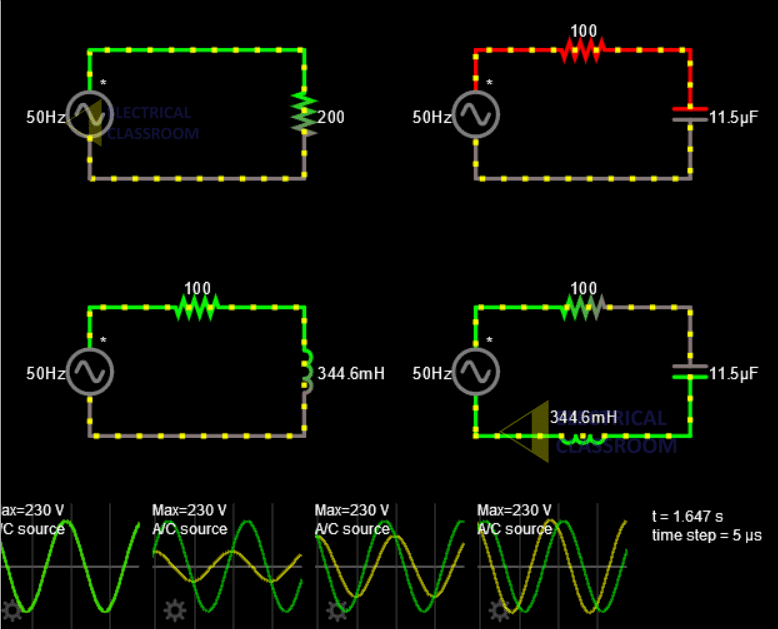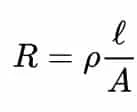When we speak about DC electricity, resistance is the term used to refer to opposition to current flow whereas impedance is the term used in AC electricity. Impedance is basically a combination of resistance and reactance. Here is the difference between resistance and impedance.
Resistance
Resistance is the term used to denote the opposition to the flow of current in a circuit or material. It depends on the resistivity and dimensions of the material. The resistance offered by a material to the flow of direct current and alternating current remains the same. It is denoted by the letter R.
Where ‘ρ‘ is the resistivity of the object, ‘l‘ is the length of the object and ‘A‘ is its area.
In terms of voltage (V) and current (I), resistance can be calculated using the following formula:
The SI unit of resistance is Ohm.
Impedance
Impedance is the opposition to alternating current. It is a combination of resistance and reactance. It is represented by a complex number and has a real and an imaginary part. The real part represents resistance and the imaginary part represents the reactance. Reactance can be capacitive, reactive, or a combination of both.
Where Z is the magnitude of impedance, R is the resistance and X is the reactance offered by the circuit components. The SI unit of impedance is Ohm.
Difference between resistance and impedance
To understand the difference between resistance and impedance better, let’s compare both of them side by side.
| Resistance | Impedance |
|---|---|
| The opposition, that is offered by a circuit to direct current. | The opposition, that is offered by a circuit to alternating current. |
| It depends on the resistivity and size of the circuit components | Impedance depends on the resistance and reactance of components. |
| Resistance is denoted by the letter R. | Impedance is denoted by the letter Z. |
| The unit of resistance is Ohm. | Also, the unit of impedance is Ohm. |
| Resistance is independent of the supply frequency. | Impedance varies with the supply frequency |
| Resistance is purely an electrical property. | Impedance is the combination of electrical and electromagnetic properties. |
| Resistance is independent of the phase difference between voltage and current. | Impedance decides the phase shift between applied voltage and current. |
| Resistance is expressed in real numbers. | Impedance is expressed in complex numbers. |

The impedance value highly depends on the supply frequency. It is a combination of resistance and inductive and capacitive reactances. These reactive part of impedance varies the current and voltage waveforms in a circuit. Resistance does not alter the current and voltage waveforms. But capacitive reactance forces the voltage to lead current while inductive reactance forces the current to lag the voltage. The below animation shows few circuits and their voltage and current waveforms.

Summary: Resistance vs impedance
The most important difference between resistance and impedance is that resistance is the term used to refer to the opposition to direct current whereas impedance is used for AC. Resistance does not change the voltage and current waveform of the circuit whereas impedance changes the current and voltage waveforms.
References
- An Introduction to the Theory of Electricity by Linnaeus Cumming
- Kennelly, Arthur. Impedance (AIEE, 1893)
- AC Ohm’s law, Hyperphysics
Read more articles like this:

“Reactance can be capacitive, reactive, or a combination of both.” Typo – “reactive” should be “inductive”.
thanks